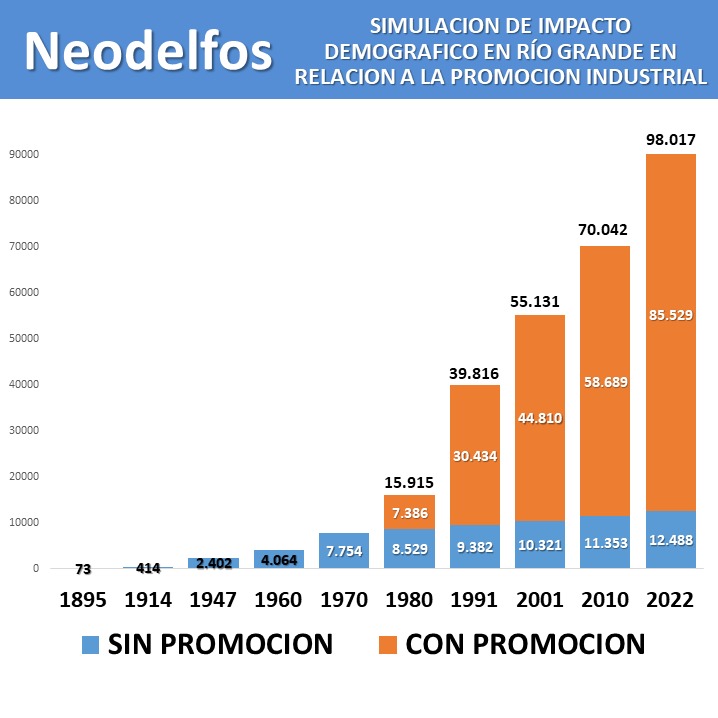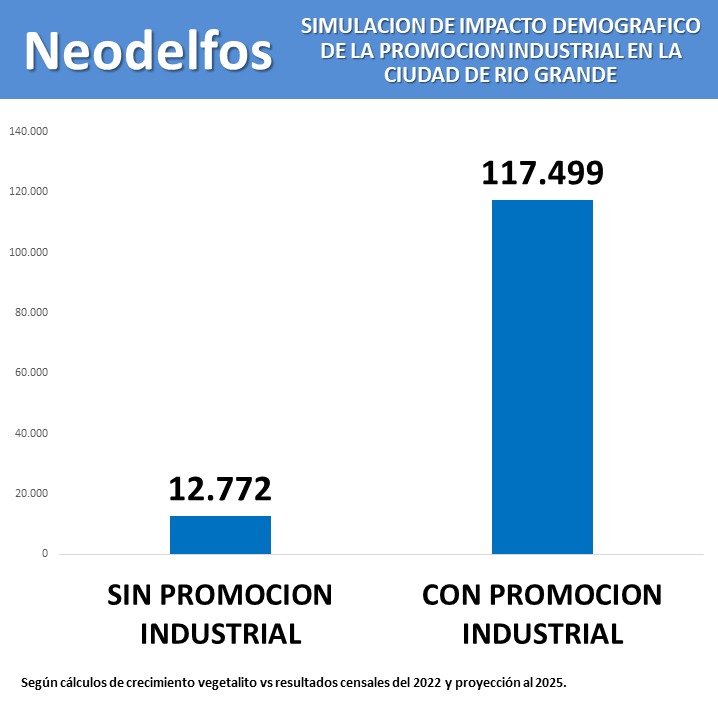The Fuegian consulting firm Neodelfos published a graph that shows the evident contrast in the city of Río Grande, between a scenario of development and population impact with the stimulus of industrial promotion and a scenario of demographic impact without the existence of industrial promotion .
The difference is notable and highlights the significant impact the Tierra del Fuego industry has had on the city of Río Grande, located on the northern Atlantic coast of Tierra del Fuego Island.
Specifically, at present, without the presence of industrial development and taking into account the natural growth of the local population, only 12,772 people would live there in 2025, compared to the 117,499 estimated by the consulting firm based on the 2022 census projection.

The difference is about 104,727 inhabitants , which clearly speaks to the enormous magnitude of the impact that the industrial regime had and the negative impact that a possible closure of it could have, as stated in recent hours by the Minister of Economy of the Nation, Nicolas Caputo.

From the local consulting firm, its owner, Leonardo Pérez Bustos , emphasized the importance of understanding the magnitude and scale of the potential impact these types of decisions could have on Tierra del Fuego, especially for direct and indirect workers and thousands of families involved in the local market, due to the impact of consumption generated through wages from the industry, which spills over and impacts every month.
"The industrial promotion regime should be one of the few State Policies our country has to sustain sovereignty in the far south of the country, understanding that sovereignty is sustained through presence, not through rhetoric," the consultant reflected.
Finally, Pérez Bustos lamented the pejorative way in which the issue is treated in the national media, which "misinforms Argentines and avoids discussing the supply chain," citing as an example a similar situation that occurred in 2017 when Mauricio Macri's government decided to reduce tariffs on imported notebooks. "At that time, they advanced by promising a significant drop in prices and an increase in the supply of models; ultimately, neither happened. Today, the Argentine market continues to offer notebooks that are above the international price. Therefore, what they are trying to promote as a solution is a fallacy; they avoid discussing the supply chain, which is where the distortions exist," he questioned.


